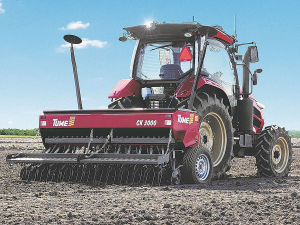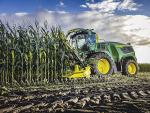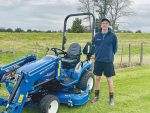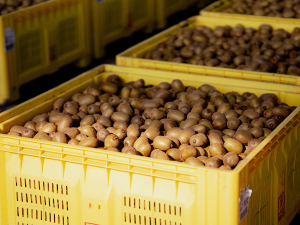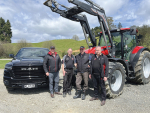While numerous tractor manufacturers have shown autonomous concepts, it looks like Yanmar have taken the winner’s sash for getting to a retail position first.
The Yanmar YT4/5A Series robot tractors rolled off the production line and on to Japanese dealer yards in April.
However, the company is taking each-way bets, as the tractors have still retained a full cabin – allowing them to be operated in a full or partially autonomous mode. Additionally, there is an option for dual working in the same paddock, with one unit under driver control and an autonomous unit running nearby.
The Yanmar autonomous tractor range will include four models – the YT488A, YT498A, YT4104A and YT5113A. These are all four-cylinder common rail diesels, pushing out 88, 98, 104 and 113hp maximum output at 2500rpm. A three-speed hydromechanical transmission offers 0.15 to 33.0 km/h in manual mode, or 0.5 to 10km/h if run autonomously.
Under development since 2015, the move to the dealer showroom has come about due to a breakthrough with the tractor’s communication signal. Previously, like other manufacturers, the Yanmar robot tractor needed a ground base station for correction signals, along with signals from the GNSS satellite for accuracy.
The new delivery system receives a multifrequency signal, allowing the tractor to receive local reference point positioning data to determine its position through a VRS (Virtual Reference Station). This means it is no longer necessary to use a base station and the system can be used anywhere a mobile signal is available.
The new delivery system receives a multifrequency signal, allowing the tractor to receive local reference point positioning data to determine its position through a VRS (Virtual Reference Station). This means it is no longer necessary to use a base station and the system can be used anywhere a mobile signal is available.
In practice, a multifrequency antenna receives signals at three different frequencies from the GNSS satellite, allowing safe operation – even if one of those frequencies is interrupted. There is also the additional benefit of a 75% reduction in positioning time, meaning the tractor can start work as soon as it arrives in the paddock.
The only major stumbling block seems to be the cost, with entry into the robotic arena – depending on model – sitting at $US105,000 to $US162,000 (NZ 144,000 to $222,00) plus taxes.

